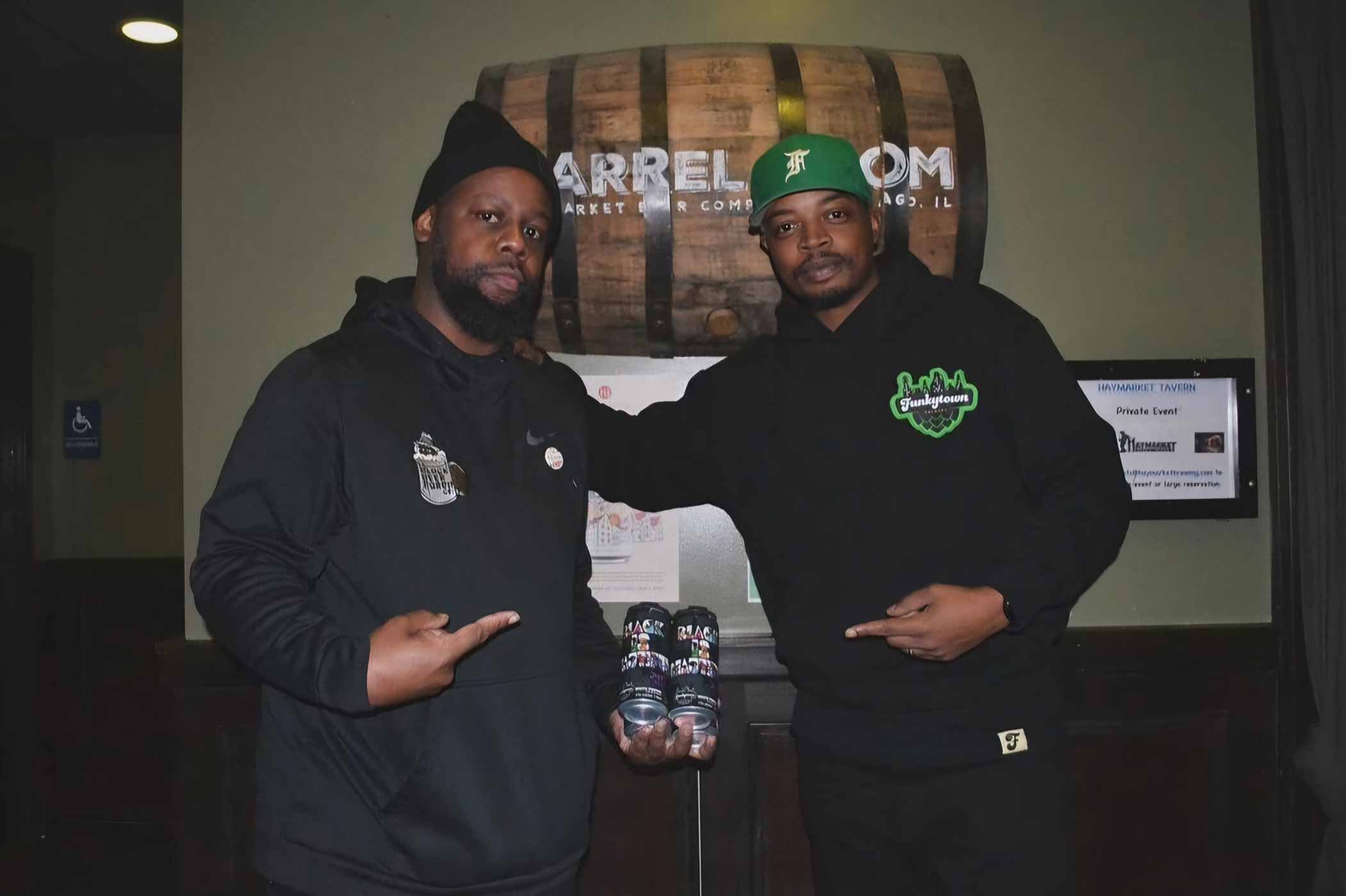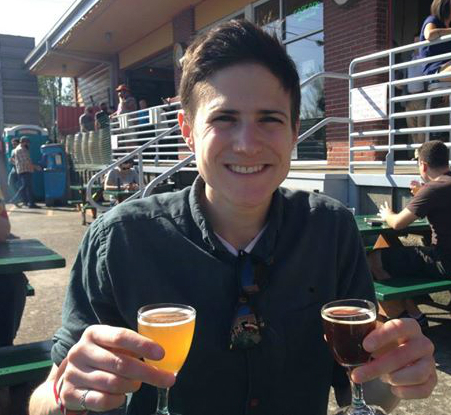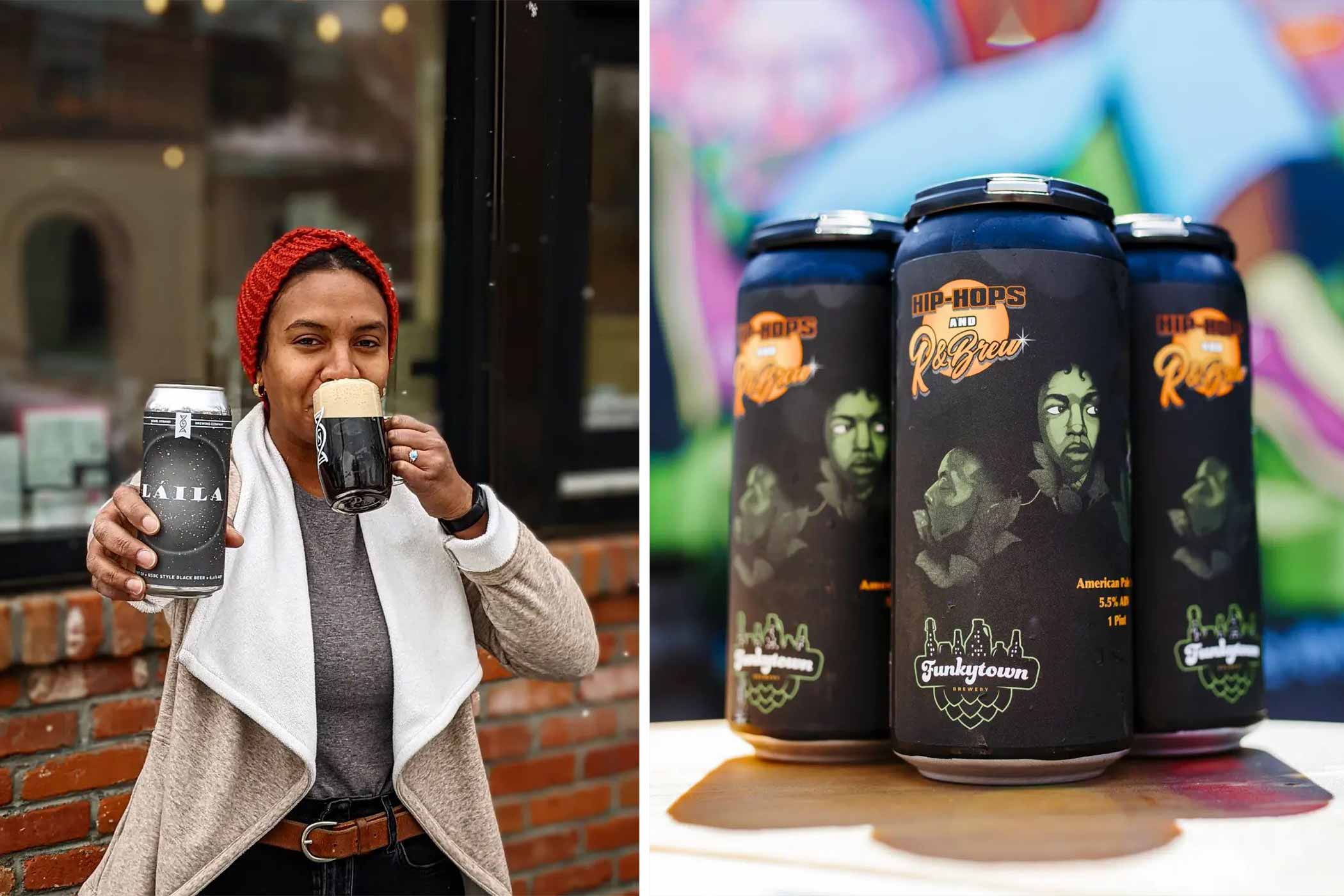Shop
Don’t Miss the Funkytown Collab Raising $5,000 for Diversity Scholarships
Paying it forward with pints.
Looking for More Like This?
Who in the Helles Left the Gate Open? That’s the name and question a new collaboration between Funkytown Brewery (one of our “14 Best Breweries of 2022”) and The Black Beer Baron will try to answer.
Based on a late-night cable show featuring preacher Reverend B.W. Smith, who used to ask who left the gate open, Who in the Helles Left the Gate Open? aims to raise money for scholarships that provide educational opportunities for Black and Brown brewers.
In 2023, Funkytown Co-Founder and Director of Brew Operations Zachary Day won a Michael James Jackson Foundation (MJF) scholarship, attending a two-week intensive course at Siebel Institute. Similarly, Jay Westbrook, founder of @blackbeerbaron, won an inaugural Illinois Craft Brewers Guild (ICBG) Diversity Scholarship that also helped pay for him to attend a course at Siebel in Chicago.
“That was eleven weeks of hell,” Westbrook jokes. But studying at one of the oldest beer schools in the U.S. has allowed Westbrook to “walk into rooms where people don’t generally look like us,” he says.
As a part of the Open Gate Fundraiser, Funkytown and The Black Beer Baron’s new beer will donate a portion of the proceeds to the MJF and ICBG diversity scholarships, aiming to pay it forward for those following in their footsteps.
“It only made sense,” says Day. “What can we do to bring more attention to the education of Black brewers and brewing?”
The beer answers who left the gate open for both Day and Westbrook.
“It’s the people who care,” explains Day, citing folks like ICBG Executive Director Ray Stout and MJF Founder and Brooklyn Brewmaster Garrett Oliver. “How can we push that forward?”
Paying It Forward With Pints
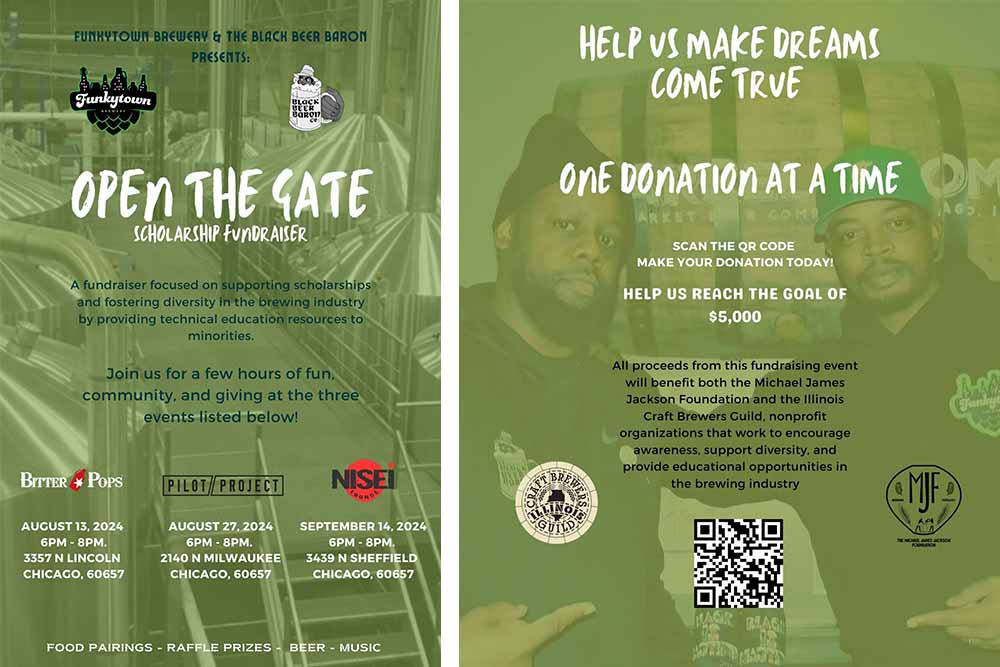
Graphic provided by Funkytown Co-Founder Zack Day
The goal of Who the Helles Left the Gate Open? is simple, but the implications are complex.
In its first year, Day and Westbrook hope the collab will raise upwards of $5,000 to go to the ICBG and MJF diversity scholarships. A dollar from every pint sold around the city will go into the split pot.
What is the potential impact of those donations?
Huge.
According to Ray Stout, the ICBG executive director, every dollar counts. The local non-profit trade association started its scholarship program three years ago, partnering with Siebel in nearby Chicago to offer two scholarships a year—one introductory and one higher-level course.
“Every dollar that comes into the guild, we’re making sure it’s used for not only the right purpose, but the best purpose, and the ability to leverage donations through fundraisers like this is only going to be able to expand our reach and help us grow and offer these scholarships to additional recipients and for years to come,” says Stout.
So far, Stout says, six applicants have completed the program.
“It’s become so clear to the ICBG leadership that having a diverse set of members and consumers is incredibly important to the craft beer industry,” says Stout. “It’s something the industry has ignored for a long, long time. Now, new voices and faces are willing to step up and make things happen.”
Stout believes his role at the ICBG is to “help amplify that change for good because representation and inclusivity matter, broader appeal matters, innovation and creativity matter, and cultural exchange matter.”
Westbrook and Day know firsthand the impact of these educational scholarships.
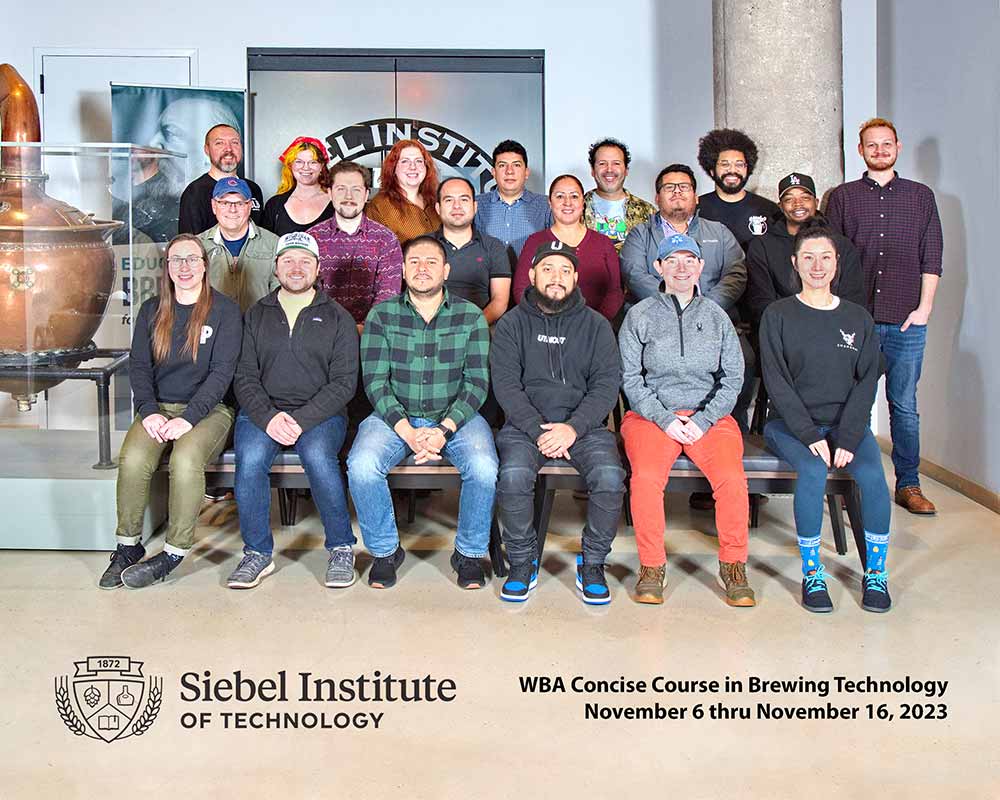
Photograph provided by Funkytown Co-Founder Zack Day
“An opportunity like that was life-changing,” says Day. “It can change the course of your career, take your hobby to another level, or give you the confidence you need.”
When I caught up with Day at the Craft Brewers Conference in Las Vegas in April, he told me what the course was like. Having previously only studied at what Day called “YouTube University,” the Siebel Concise Course included two straight weeks of classes from 8 a.m. to 4 p.m.
“It was truly intense,” Day shared. “I was nervous as hell because I was surrounded by folks who had been brewing for a long time, so it was intimidating, but everyone was super cool, and I made friendships and left feeling super accomplished.”
Day says one of the most important things he learned was actually how interpretative brewing can be. “There’s a playbook, but the language changes,” he said. “Beer is an open canvas. You can create and express your own individuality. I love that part because everyone is not the same.”
When Westbrook got into the industry, he always knew he wanted to brew. He released his first beer at Haymarket—Harold’s ‘83 Honey. “There are so many different paths to get into this industry,” says Westbrook, who had never even homebrewed before making that beer. “Back in 2020, a mutual friend of mine at Haymarket put us in the same room because they were interested in working with someone in the industry who was a minority and interested in brewing beer.”
The honey beer with Vienna and honey malts, oats, BeeLove Midwest Clover honey, and Zuper Saazer hops was such a hit that “We ended up putting it in cans and pandemic proofing it!” shares Westbrook, who then applied for and won the ICBG Diversity in Brewing Scholarship.
Now, he and Day hope this unique collab will pay it forward with pints.
“We need to have some iteration on graduation,” says Westbrook. “I had no idea it would turn into Who in the Helles Left the Gate Open? But let’s keep this ball rolling.”
And let’s be honest, as a helles, we bet you could probably crush at least five of these, right?
Who in the Helles Left the Gate Open? Why a Helles?
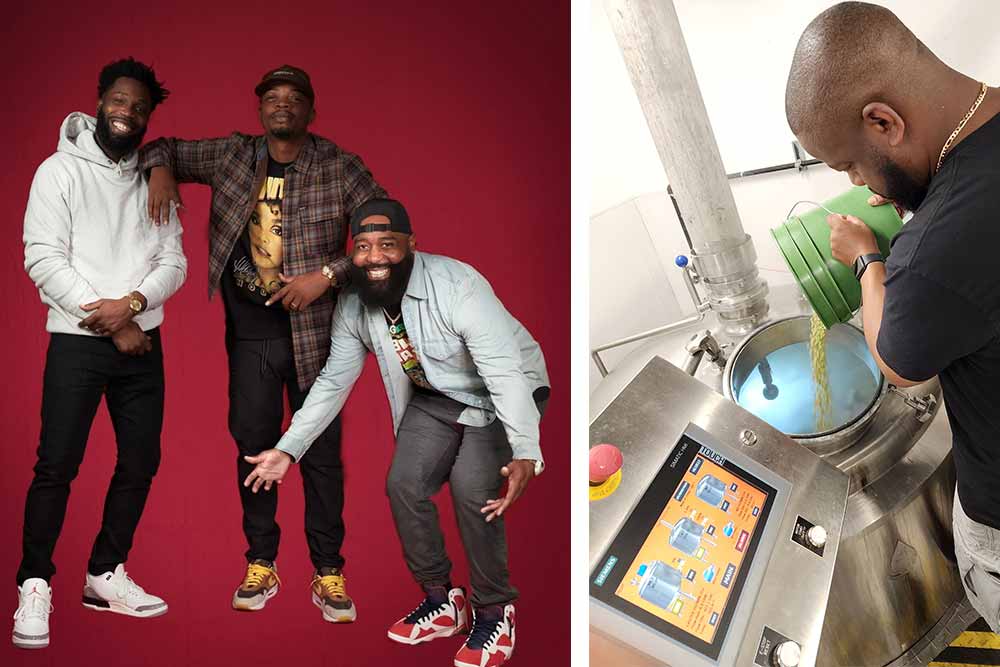
Photograph courtesy of Geoffrey Black (on the left)
A traditional helles at heart, this beer is full-bodied and “super crushable and palatable,” according to Day.
And that’s intentional.
“We can’t lose the fact that we’re still trying to get new drinkers into the beer market,” Day explains. “So, with this, it’s easily crushable.”
When the National Black Brewers Association (NB2A), a first-of-its-kind organization promoting Black and Brown brewers, released its 2024 State of the Black Brewers in July, the report showed a massive gap between the percentage of Black and Brown people drinking beer versus spirits (46.8% vs 83.3%). The NB2A offered a few reasons, including a lack of targeted marketing.
“The craft beer consumer base and the workforce are dominated by white males. Black people have not authentically connected with beer the way craft, import, and macro beers have connected their marketing efforts to other racial demographics,” wrote the report. “Spirit brands have done a significantly better job of authentically connecting with Black consumers than beer brands. The result has been an absence of the Black drinking population in craft beer.”
Day and Westbrook hope an approachable beer like a helles will better attract new drinkers of color.
The 4.7% ABV beer starts with a base of Pilsner and Munich malt before an addition of Hallertau Mittelfrüh hops.
“Noble hops in there, so it’s real tradition with that earthy tone and smell to it, but super light and super good,” says Day.
How Can You Help Raise More Than $5,000 Just By Drinking a Beer?
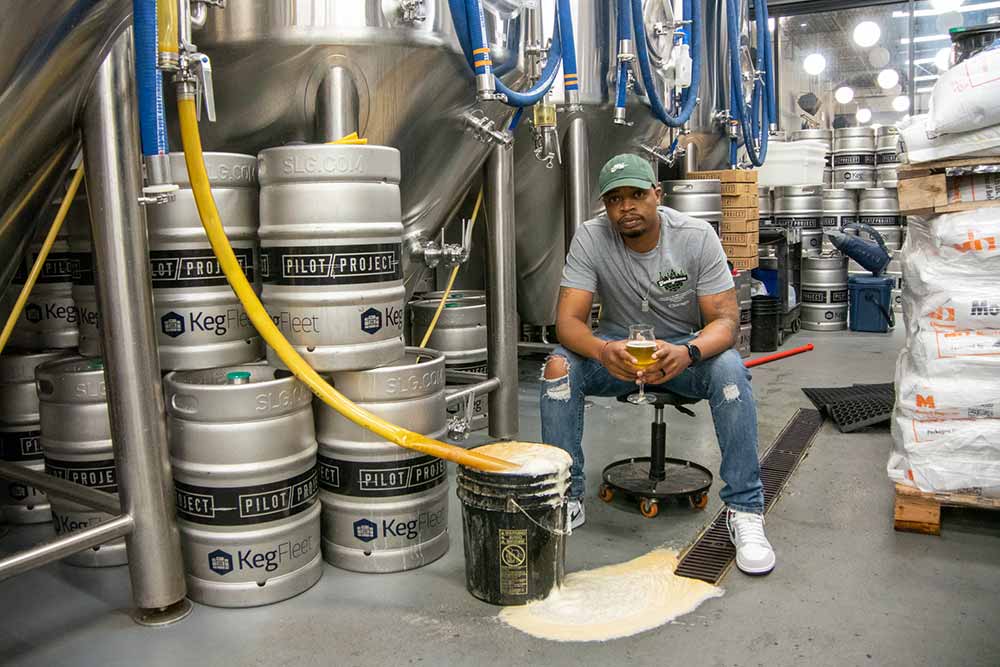
Photograph provided by Funkytown Co-Founder Zack Day
Only available on draft, kegs of Who in the Helles Left the Gate Open? can be found at accounts around Chicago such as Pilot Project, Haymarket, Bitter and Pops, and Nisei Lounge.
But hurry, Day says they only made ten barrels, so you’ll have a limited time to make an impact.
This past week, Funkytown and The Black Beer Baron hosted an event at Pilot Project that raised over $1k in just one hour. And they’re hoping to do the same next month at Nisei Lounge.
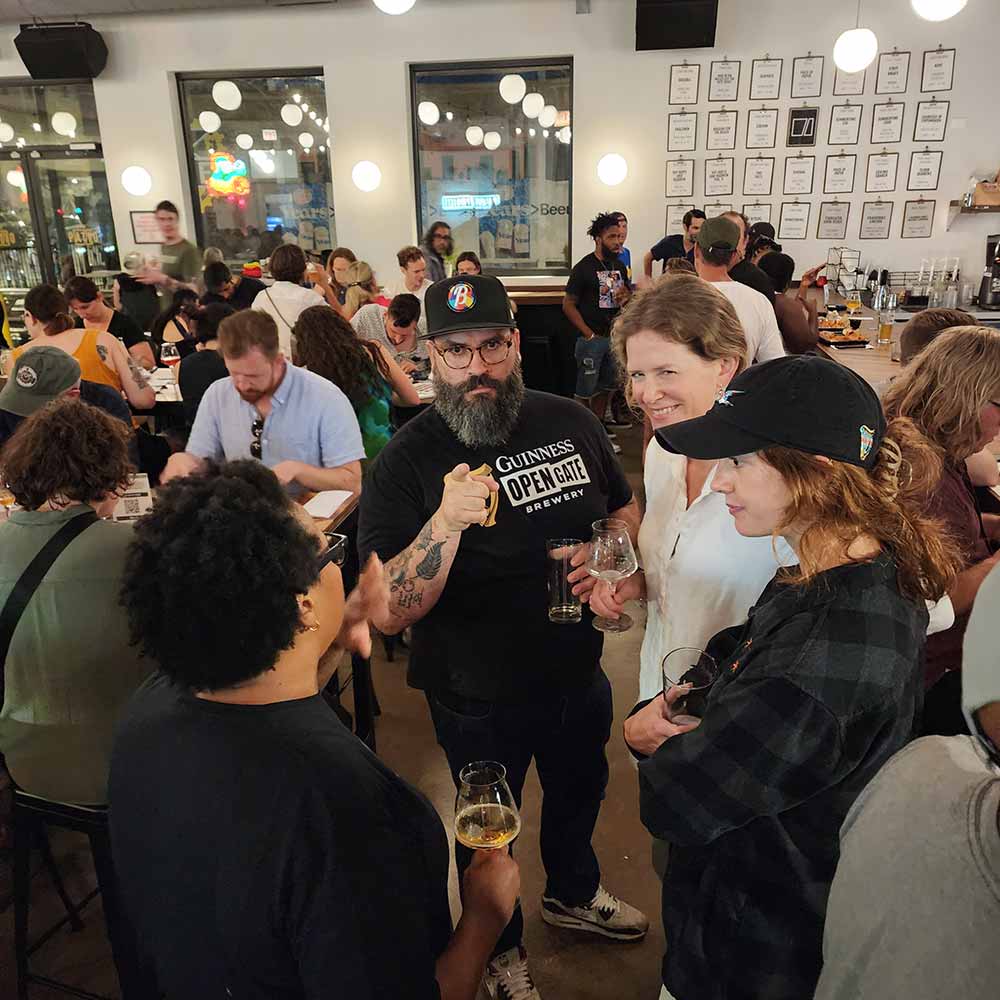
Photo provided by Zack Day, Co-Founder Funkytown Brewery
On September 14th, from 8 p.m. to 11 p.m. CT, Who in the Helles Left the Gate Open? will be pouring all night. Additionally, Westbrook says any cash tips left that night will go directly into the fundraising pot. “I tell people all the time: Cash is king!” says Westbrook, who plans to bartend. “That way, the money gets directed directly to the people who deserve it.”
And while Day, Westbrook, and Stout believe $5,000 is a good start, they’re already eyeing bigger ambitions.
“There’s no reason why this doesn’t become one of the biggest collaboration beers in Illinois,” says Stout. “This is something that will continue to grow and continue to help people get through these programs for years to come.”
Day echoes that thought, noting they could package the beer for an expanded reach next year.
“This can go on for years,” he says. “We can do this holistically from all sides and with all breweries in the state of Illinois to get the support we need. There is absolutely a way we can make this ten grand and above.”
Day and Westbrook have opened the gate for others just as it was for them. The only question now is: Who in the helles will walk through next?
“Once you’re able to further diversify craft beer, and you’re able to get people in the spots in which they didn’t know that they could get there, now, all of a sudden, they have cultural representation,” says Day. “When you start letting those people, pun intended, through the gate, this is what you get going.”

